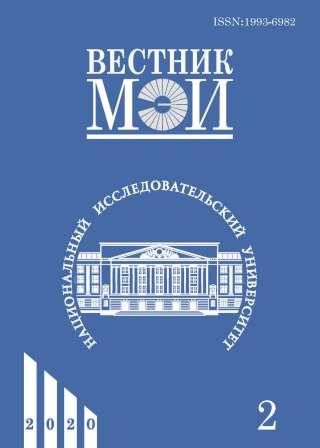Анализ функций потерь при обучении сверточных нейронных сетей с оптимизатором Adam для классификации изображений
Аннотация
Рассмотрена задача анализа и определения функций потерь, используемых при обучении сверточных нейронных сетей (СНС) и обеспечивающих наибольшую точность классификации изображений. Проанализированы функции потерь, реализованные на основе библиотек машинного обучения Keras и TensorFlow, позволяющих проектировать, обучать и использовать СНС на языке Python. В качестве источников изображений для обучения и оценки СНС использованы наборы данных MNIST, EMNIST и CIFAR10. На указанных наборах обучаются СНС с различной архитектурой, для каждой из которых сохраняется история ее обучения (сведения о точности классификации изображений по обучающей и оценочной выборках после каждой эпохи обучения). Затем полученные результаты обобщаются. Наибольшая достигнутая точность классификации изображений позволяет обосновать целесообразность использования при обучении СНС соответствующих функций потерь.
Литература
2. Fukushima K. Neocognitron: A Self-Organizing Neural Network for a Mechanism of Pattern Recognition Unaffected by Shift in Position // Biological Cybernetics. 1980. V. 36. No. 4. Pp. 193—202.
3. LeCun Y. e. a. Back-propagation Applied to Handwritten Zip Code Recognition // Neural Computation. 1989. V. 1. No. 4. Pp. 541—551.
4. LeCun Y. e. a. Gradient-based Learning Applied to Document Recognition // Proc. IEEE. 1998. V. 86. No. 11. Pp. 2278—2324.
5. LeCun Y. e. a. Handwritten Digit Recognition with a Back-Propagation Network // Advances in Neural Information Proc. Syst. 1990. V. 2. Pp. 396—404.
6. Keras: The Python Deep Learning library [Электрон. ресурс] https://keras.io/ (дата обращения 01.05.2019).
7. TensorFlow. An Open Source Machine Learning Framework for Everyone [Электрон. ресурс] https://www. tensorflow.org/ (дата обращения 01.05.2019).
8. Keras documentation. Convolutional Layers [Электрон. ресурс] https://keras.io/layers/convolutional/ (дата обращения 01.05.2019).
9. Keras documentation. Core Layers [Электрон. ресурс] https://keras.io/layers/core/ (дата обращения 01.05.2019).
10. LeCun Y., Cortes C., Burges C. The MNIST Database of Handwritten Digits [Электрон. ресурс] http:// yann.lecun.com/exdb/mnist/ (дата обращения 01.05.2019).
11. Cohen G. e. a. EMNIST: an Extension of MNIST to Handwritten Letters [Электрон. ресурс] https://arxiv. org/pdf/1702.05373.pdf (дата обращения 01.05.2019).
12. The CIFAR10 Dataset. [Электрон. ресурс] https://www.cs.toronto.edu/~kriz/cifar.html (дата обращения 01.05.2019).
13. Николенко С., Кадурин А., Архангельская Е. Глубокое обучение. СПб.: Питер, 2018.
14. Джулли А., Пал С. Библиотека Keras — инструмент глубокого обучения. М.: ДМК Пресс, 2018.
15. Trains a ResNet on the CIFAR10 Dataset [Электрон. ресурс] https://keras.io/examples/cifar10_resnet/ (дата обращения 01.05.2019).
16. Janocha K., Czarnecki W.M. On Loss Functions for Deep Neural Networks in Classification. Submitted on 18 Feb 2017. [Электрон. ресурс] https://arxiv.org/abs/1702.05659 (дата обращения 01.05.2019).
17. Бартеньев О.В. Классификация изображений нейронной сетью [Электрон. ресурс] http://100byte.ru/ python/imgClasses/imgClasses.html (дата обращения 01.05.2019).
18. He K. e. a. Deep Residual Learning for Image Recognition // Proc. 2016 CVPR, 2016. Pp. 770-778.
19. Функции потерь библиотеки Keras [Электрон. ресурс] http://100byte.ru/python/loss/loss.html (дата обращения 01.05.2019).
20. Keras Documentation. Built-in Loss Functions. [Электрон. ресурс] https://github.com/kerasteam/keras/blob/master/keras/losses.py (дата обращения 01.05.2019).
21. Keras Advanced Activations [Электрон. ресурс] https://keras.io/layers/advanced-activations/ (дата обра- щения 01.05.2019).
22. Kingma D., Ba J. Adam: A Method for Stochastic Optimization // arXiv, 2014. [Электрон. ресурс] http:// arxiv.org/abs/1412.6980 (дата обращения 01.05.2019).
23. Keras documentation. Merge Layers [Электрон. ресурс] https://keras.io/layers/merge/ (дата обращения 01.05.2019).
24. Keras Documentation. ImageDataGenerator [Электрон. ресурс] https://keras.io/preprocessing/image/ (дата обращения 01.05.2019).
25. Keras documentation. How can I Obtain Reproducible Results Using Keras During Development? [Электрон. ресурс] https://keras.io/getting-started/faq/#how-can-i-obtain-reproducible-results-using-keras-during-development (дата обращения 01.05.2019).
---
Для цитирования: Апарнев А.Н., Бартеньев О.В. Анализ функций потерь при обучении сверточных нейронных сетей с оптимизатором Adam для классификации изображений // Вестник МЭИ. 2020. № 2. С. 90—105. DOI: 10.24160/1993-6982-2020-2-90-105.
#
1. Fukushima K. Neural Network Model for a Mechanism of Pattern Recognition Unaffected by Shift in Position — Neocognitron. Trans. IECE. 1979;J62-A(10): 658—665.
2. Fukushima K. Neocognitron: A Self-Organizing Neural Network for a Mechanism of Pattern Recognition Unaffected by Shift in Position. Biological Cybernetics. 1980; 36;4:193—202.
3. LeCun Y. e. a. Back-propagation Applied to Handwritten Zip Code Recognition. Neural Computation. 1989;1;4:541—551.
4. LeCun Y. e. a. Gradient-based Learning Applied to Document Recognition. Proc. IEEE. 1998;86;11:2278— 2324.
5. LeCun Y. e. a. Handwritten Digit Recognition with a Back-Propagation Network. Advances in Neural Information Proc. Syst. 1990;2:396—404.
6. Keras: The Python Deep Learning library [Elektron. Resurs] https://keras.io/ (Data Obrashcheniya 01.05.2019).
7. TensorFlow. An Open Source Machine Learning Framework for Everyone [Elektron. Resurs] https://www. tensorflow.org/ (Data Obrashcheniya 01.05.2019).
8. Keras documentation. Convolutional Layers [Elektron. Resurs] https://keras.io/layers/convolutional/ (Data Obrashcheniya 01.05.2019).
9. Keras documentation. Core Layers [Elektron. Resurs] https://keras.io/layers/core/ (Data Obrashcheniya 01.05.2019).
10. LeCun Y., Cortes C., Burges C. The MNIST Database of Handwritten Digits [Elektron. Resurs] http://yann. lecun.com/exdb/mnist/ (Data Obrashcheniya 01.05.2019).
11. Cohen G. e. a. EMNIST: an Extension of MNIST to Handwritten Letters [Elektron. Resurs] https://arxiv.org/pdf/1702.05373.pdf (Data Obrashcheniya 01.05.2019).
12. The CIFAR10 Dataset. [Elektron. Resurs] https:// www.cs.toronto.edu/~kriz/cifar.html (Data Obrashcheniya 01.05.2019).
13. Nikolenko S., Kadurin A., Arkhangel'skaya E. Glubokoe Obuchenie. SPb.: Piter, 2018. (in Russian).
14. Dzhulli A., Pal S. Biblioteka Keras — Instrument Glubokogo Obucheniya. M.: DMK Press, 2018. (in Russian).
15. Trains a ResNet on the CIFAR10 Dataset [Elektron. Resurs] https://keras.io/examples/cifar10_resnet/ (Data Obrashcheniya 01.05.2019).
16. Janocha K., Czarnecki W.M. On Loss Functions for Deep Neural Networks in Classification. Submitted on 18 Feb 2017. [Elektron. Resurs] https://arxiv.org/ abs/1702.05659 (Data Obrashcheniya 01.05.2019).
17. Barten'ev O.V. Klassifikatsiya Izobrazheniy Neyronnoy Set'yu [Elektron. Resurs] http://100byte.ru/python/imgClasses/imgClasses.html (Data Obrashcheniya 01.05.2019). (in Russian).
18. He K. e. a. Deep Residual Learning for Image Recognition. Proc. 2016 CVPR, 2016:770-778.
19. Funktsii Poter' Biblioteki Keras [Elektron. Resurs] http://100byte.ru/python/loss/loss.html (Data Obrashcheniya 01.05.2019). (in Russian).
20. Keras Documentation. Built-in Loss Functions. [Elektron. Resurs] https://github.com/keras-team/keras/blob/master/keras/losses.py (Data Obrashcheniya 01.05.2019).
21. Keras Advanced Activations [Elektron. Resurs] https://keras.io/layers/advanced-activations/ (Data Obrashcheniya 01.05.2019).
22. Kingma D., Ba J. Adam: A Method for Stochastic Optimization. arXiv, 2014. [Elektron. Resurs] http://arxiv. org/abs/1412.6980 (Data Obrashcheniya 01.05.2019).
23. Keras documentation. Merge Layers [Elektron. Resurs] https://keras.io/layers/merge/ (Data Obrashcheniya 01.05.2019).
24. Keras Documentation. ImageDataGenerator [Elektron. Resurs] https://keras.io/preprocessing/image/(Data Obrashcheniya 01.05.2019).
25. Keras documentation. How can I Obtain Reproducible Results Using Keras During Development? [Elektron. Resurs] https://keras.io/getting-started/faq/#howcan-i-obtain-reproducible-results-using-keras-during-development (Data Obrashcheniya 01.05.2019).
---
For citation: Aparnev A.N., Barten′ev O.V. Analyzing the Loss Functions in Training Convolutional Neural Networks with the Adam Optimizer for Classification of Images. Bulletin of MPEI. 2020;2:90—105. (in Russian). DOI: 10.24160/1993-6982-2020-2-90-105.




